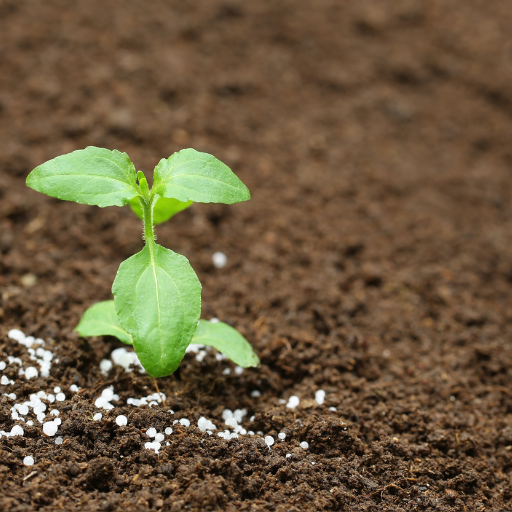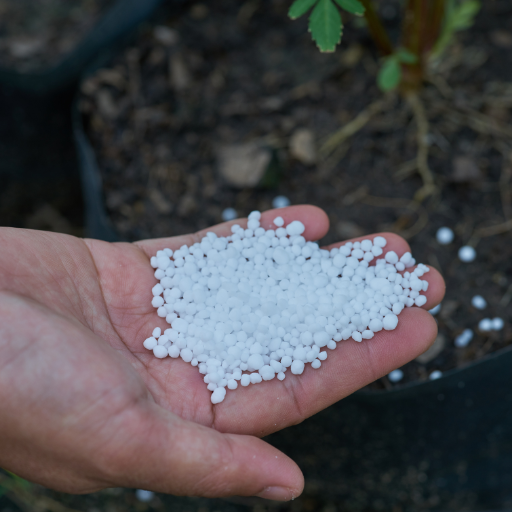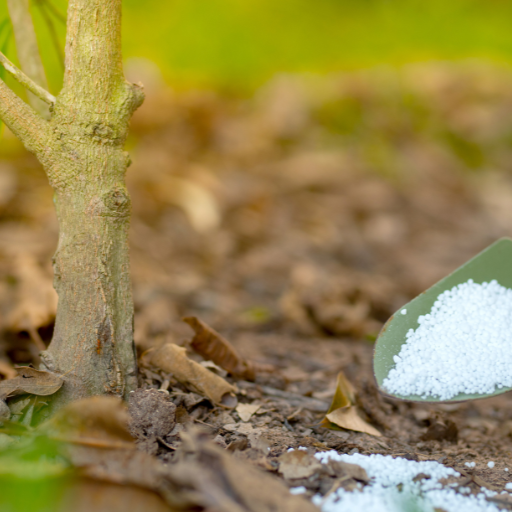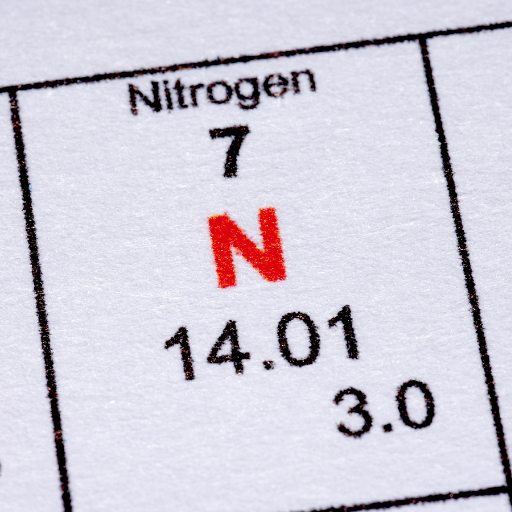Plant growth and development depend on nitrogen, which is vital for many physiological and biochemical processes. Nitrogen is an important plant structural component that plays a role in proteins’ amino acids, nucleic acids, and chlorophyll. In agriculture, grasping nitrogen’s role helps optimize crop yield and promote sustainability. Nitrogen use efficiency directly affects several aspects, such as environmental stresses, productivity, and the health of plants. In this article, we explore how plants absorb, change and use nitrogen while providing some guidelines on best management practices for adequate availability of nitrogen required for optimum crop performance. We intend to give readers a holistic understanding of this article by examining the effects of nitrogen on plant biology so as to enhance agricultural outcomes.
What is Nitrogen and Why Do Nitrogen and Plants Need Nitrogen?
Nitrogen (N) is an abundant element in the Earth’s atmosphere, constituting about 78% of the air we breathe. Despite its abundance (in the air), nitrogen is unavailable directly to most plants because it comes as diatomic gas N₂. Instead, plants require nitrogen as ions of either ammonium (NH₄⁺) or nitrate (NO₃⁻) which they can absorb and use for growth and development.
The importance of nitrogen for plants is seen in its basic role in synthesizing important biomolecules:
- Amino Acids and Proteins: Nitrogen is vital to amino acids, the building blocks of proteins that are essential for the formation of plant tissues, enzymes, and various metabolic processes.
- Nucleic Acids: The nitrogenous bases constitute DNA and RNA, which carry genetic information and are involved in protein synthesis.
- Chlorophyll: Nitrogen makes up chlorophyll, the green pigment that helps plants carry out photosynthesis; this enables plants to convert light into chemical energy.
Plants take up nitrogen mostly through root absorption from soil where it exists in form of nitrate or ammonium ions. This process involves a number of steps:
- Nitrification: It changes ammonium (NH₄⁺) into nitrate (NO₃⁻) to make it more available to plants by soil bacteria like Nitrosomonas and Nitrobacter.
- Assimilation: Root cells pick nitrates from the roots reducing them back to ammonium ions. These ions later serve as building block for amino acids.
Efficient nitrogen management in agriculture includes monitoring soil levels, using crops that fixate on nitrogen, and judicious fertilizer application to avoid deficiencies and excesses, which can cause problems such as water pollution and greenhouse gas emissions.
Technical Parameters
- Soil Nitrogen Content: Optimal levels of nitrate-nitrogen depend on the crop type but generally range from 20 to 40 mg/kg.
- Nitrogen Use Efficiency (NUE): This parameter measures how well plants utilize available nitrogen, ideally aiming for an efficiency rate of 50-80%.
- Fertilizer Application Rates: Recommended rates vary, for instance, maize might require between 100 to 200 kg/ha of nitrogen.
By understanding these aspects of nitrogen and its utilization, farmers can optimize agricultural practices to enhance crop productivity sustainably.
Why is Nitrogen essential in plant growth?
Nitrogen is irreplaceable in plant growth due to many important physiological processes it plays a major role in. Firstly, nitrogen forms the main component of amino acids which are proteins’ building blocks essential for the structure and function of plant cells. Proteins such as enzymes play a vital part in catalysing biochemical reactions that support life. Secondly, nitrogen is important for nucleic acid synthesis (DNA and RNA) that carry and execute genetic instructions required during cell division, growth and reproduction.
The other reason why this element is very crucial in photosynthesis is because it contains chlorophyll whose structure consists a large number of nitrogens atoms. Light energy conversion into chemical energy occurring during photosynthesis results in glucose production, which serves as the principal energy source for plants. Thus, the availability of enough nitrogen directly affects photosynthetic activity, resulting in general high plant productivity levels.
Technical Parameters:
- Amino Acid Production: Nitrogen is necessary for the production of amino acids that are used as building blocks for protein formation. For instance, the amino acid glutamine requires processes like those involving the addition of ammonia.
- Nucleic Acids Synthesis: Nitrogen occurs within purines and pyrimidines, i.e., DNA and RNA’s nitrogenous bases, respectively, which are central to information transfer at the genetic level as well as general cellular operations.
- Chlorophyll Formation: Each chlorophyll molecule has four atoms of nitrogen. Nitrogen sufficiency ensures maximal chlorophyll formation that enhances photosynthetic efficiency.
- Nitrogen Uptake Forms: Plants take up nitrogen in the form of nitrate (NO3-) and ammonium (NH4+) ions. Soil testing for these ions helps to determine the availability for good crop management.
Adequate nitrogen management in agriculture ensures that plants are supplied with essential nutrients for performing such functions resulting in increased growth, better yields, and improved tolerance to environmental stresses.
How do plants get Nitrogen from different sources?
Plants obtain nitrogen from various sources by a variety of mechanisms, primarily from soil and atmospheric nitrogen. Soil nitrogen is mainly available as nitrate (NO3-) and ammonium (NH4+) ions which are absorbed by plant roots. This process is facilitated by specific transporter proteins that enable the uptake and assimilation of these ions into organic compounds.
Technical Parameters:
- Soil Nitrogen (Nitrate and Ammonium Ions):
- Nitrate Uptake involves nitrate transporters such as NRT1 and NRT2, which move nitrate ions from soil into root cells.
- Ammonium Uptake: It involves ammonium transporters like AMT1 through which absorption of ammonium ion takes place from the soil.
- Nitrogen Fixation (Symbiotic and Non-Symbiotic):
- Symbiotic Nitrogen Fixation: Leguminous plants form symbiotic relationships with Rhizobium bacteria which convert atmospheric nitrogen (N2) to ammonia (NH3) through their activity of the enzyme called nitrogenase. In this manner, plants can use their direct sources of atmospheric nitrogen.
- Non-Symbiotic Nitrogen Fixation: Free-living bacteria like Azotobacter also fix atmospheric nitrogen thereby making it available in the soil for plant uptake
- Mineralization and Ammonification:
- Mineralization is the process by which soil microorganisms decay organic matter, releasing ammonium ions.
- Ammonification: Saprophytic bacteria and fungi convert organic nitrogen from dead plants and animals into ammonium ions, thus making it available for plant use as nitrogen.
- Nitrification:
- Step 1: Nitrosomonas bacteria oxidize ammonia to nitrite (NO2-).
- Step 2: Nitrobacter bacteria further oxidize nitrite to nitrate which is then taken up by plants.
- Atmospheric Nitrogen Deposition:
- There are various nitrogen compounds such as ammonia and nitrogen oxides that occur in the atmosphere due to both natural causes or anthropogenic activities. The deposition of these compounds on the ground during rainfall or snowfall provides additional source of nitrogen for plants growth.
In agriculture, efficient management of these sources and understanding of their functioning are vital for plants to get sufficient N for their optimal growth and productivity.
How Do Plants Absorb Nitrogen from the Soil?

Plants get nitrogen through their root systems by absorbing ammonium (NH4+) and nitrate (NO3-) ions. During the uptake process, specific transport proteins on the membrane facilitate the movement of these ions into the root cells from the soil. When inside, nitrate is usually changed to nitrite (NO2) or ammonia NH4 in the root cells or transported to shoots where it goes into amino acids, proteins and other vital organic molecules. Among others, nitrogen absorption efficiency is affected by soil pH, temperature, moisture content and occurrence of mycorrhizal fungi that enhance nutrient uptake.
Which processes are involved in plants absorbing nitrogen?
Comprehend the processes which are involved for plants to absorb nitrogen that include fixing, nitrification and assimilation. Fixing refers to the turning of free atmospheric nitrogen into either ammonia by diazotrophs, a type of bacteria found in the soil, or those that form mutualistic relationships with legumes. This is followed by nitrification where ammonia is oxidized first to form nitrite ion (NO2-) by bacteria such as Nitrosomonas then later converted to nitrate ion (NO3-) by Nitrobacter. Plants, therefore, take up nitrates or ammonium ions from soils through roots. Once inside plants, nitrates are reduced to ammonium and incorporated into organic molecules via assimilation mechanism. The series of reactions ensures suitable availability of plant growth forms of nitrogen.
How do Plant Roots facilitate Nitrogen uptake?
Plant roots help facilitate nitrogen uptake using several vital mechanisms. To start with, they release root exudates which are organic compounds that stimulate microbes in soils thus making more nitrogen available for utilization. Additionally, there is an increase in surface area for absorption due to presence of root hairs which facilitates efficient intake of NO3- and NH4+ ions from soil solutions respectively. Also roots enter symbiotic relationships with mycorrhizal fungi that enhance root absorptive surface area thus accessing nitrogen from more soil volume. Nitrogen ions are transported to the plant by specific carrier proteins present on root cell membrane, facilitating successful assimilation and utilization of these nutrients for growth and development.
What Role Does Soil Nitrogen Play in Plant Growth?

Nitrogenous soil is a vital macronutrient that plays a critical role in the growth and development of plants. It is essential for the synthesis of amino acids which form proteins’ basic components besides being necessary for nucleic acid and chlorophyll production. Photosynthesis is significantly influenced by nitrogen which either encourages or inhibits plant energy production and ultimately growth rates. Appropriate amounts of nitrogen in the soil also results to strong root systems, increased leaf vigor, color, crop yields among others. However, lack of it or excess can lead to slow growth rate as well as nutritional loss through leaching into ground water respectively. Therefore, optimal levels of nitrogen must be maintained for sustainable agriculture practices and high yielding crop production.
What forms of Nitrogen are present in the Soil?
This is because nitrogen within soil exists mainly as organic nitrogen and inorganic nitrogen. Majority of it exists in an organic form found in soil humus such as microbial biomass, plant residues etc., which further requires microbial mineralization process before it can be converted into an available form for plants.
In this case, ammonium (NH4+) and nitrate (NO3-) ions are the most common examples representing inorganic nitrogen valency states within soils. Ammonium is created during decomposition of organic matter; therefore it can be readily taken up by roots directly. However, under aerobic conditions ammonium is converted into nitrate through nitrification process carried out by specific bacteria found on soils. Nitrate ion has higher solubility in water hence easily absorbed by plants but this characteristic also makes it more leachable into ground water.
The C:N ratio and mineralization rates are key technical parameters related to soil nitrogen. In general, lower C:N ratio leads to faster mineralization rates and greater availability of N since soil organic matter decomposes at a higher rate due to the increase biological activity resulting from lower C:N ratios.. Mineralization rates depend on such parameters as soil moisture, temperature, aeration and microbial activity which significantly vary due to the differences between soil type and environmental factors.
It is important to understand these forms and how they are cycled within the soil ecosystem in order to effectively manage nitrogen in agricultural systems which results in good plant growth with minimum nitrate leaching
How is Nitrogen absorbed by Plants from Soil?
Nitrate (NO3-) and ammonium (NH4+) ions are the main methods by which plants take up nitrogen from the soil using their roots. The absorbing sites are known as root cell membranes, which have special transport proteins that facilitate this process. Within plant cells, nitrate is reduced to ammonium through an enzyme called nitrate reductase before being further assimilated into amino acids nucleotides and chlorophyll by glutamine synthetase and glutamate synthase.
Some technical factors affecting nitrogen assimilation include:
- Soil pH: Optimum pH levels of around 6.0 – 7.0 favors accessibility of ammonium plus that of nitrate ions.
- Soil Temperature: High temperatures increase rates of nitrogen mineralization causing higher microbial activities thereby promoting assimilation.
- Soil Moisture: Adequate water content enables microbial energy flow as well as its movement making it easy for crop uptake.
- C:N Ratio: An appropriate ratio ensures efficient production of NH4+ available for plants.
- Nitrification: Good aeration and oxygen availability are necessary so that ammonium can be converted into nitrate via the nitrification process, making it easily accessible for plants.
Knowledge about these parameters facilitates effective management of N so as to ensure food availability in optimum amounts.
How does Nitrogen Deficiency Affect Plant Growth?

There is a profound effect on the growth and development of plants when there is nitrogen deficiency because it is an important macro nutrient in various physiological processes. Nitrogen deficiency has key symptoms including stunted growth, chlorosis (yellowing of leaves), and reduced yield. Due to nitrogen being a mobile nutrient, its reallocation under deficiency conditions starts from chlorosis which primarily found in older leaves. This depletion results into absence of chlorophyll and vital proteins that interfere with photosynthesis as well as general plant fitness.
The technical parameters to think about concerning nitrogen deficiency are:
- Soil pH: Soil pH mainly affects the availability of nitrogen. Acidic soils (pH less than 5.5) can restrict ammonium or nitrate ions limiting their availability making the situation worse under severe case of this condition.
- Organic Matter Content: Low levels of organic matter mean that soil would be less capable of supplying nitrogen through mineralization, thus affecting the plant’s ability to obtain nitrogen.
- Temperature and Moisture: Inadequate temperature or water content may retard microbial activities at the time that could have led to fixation processes being hampered resulting into a lack of enough nitrogen supplies for plants.
- Soil Compaction: Compacted soils hinder root penetration leading to situations where plants cannot get enough soil-based nitrogen hence suffer from deficiencies.
Consider these parameters to address nitrogen deficiencies and improve a plant’s overall health and productivity.
What Are The Indicators Of Nitrogen Deficiency In Plants?
Nitrogen deficiency among other symptoms has different indications that must be promptly identified and rectified if necessary. These major symptoms include
- Chlorosis: This yellowing usually starts at the bottom with older leaves.The shortage occurs following redistribution within old leaves, either returning to new growing parts or leading to chlorosis due to the mobility nature exhibited by Nitrogen nutrients.
- Stunted Growth: A possible cause for stunted growth among plants experiencing an insufficient supply of nitrates is the linkage between nitrogen and the production of amino acids, protein, and nucleic acids, which are significant in cell development.
- Reduced Yield: Weaker plants often give out fewer or smaller fruits/flowers/seeds during maturity meaning that their overall productivity is low. This is because nitrogen is an element of chlorophyll necessary for photosynthesis and energy generation.
- General Pale Green Coloring: In non-leguminous plants, one can see lighter green coloration all over the plant. This means that there is inadequate chlorophyll synthesis affecting sunlight utilization by the plant.
Technical parameters associated with these signs include:
- Soil pH: Nitrogen gains its availability from soil pH with acidity soils (pH < 5.5) limiting nitrogen availability to the uptake forms by plants.
- Soil Organic Matter: Reduced mineralization due to decreased organic matter content means less nitrogen is available in such soils, thus affecting the soil’s nitrogen budget on average.
- Temperature and Moisture: It is important to note that both parameters are very crucial since they may disrupt microbial activity hence retarding nitrogen mineralization process. Extreme temperatures and scarcity of water cause symptoms to develop further under conditions of deficiency.
- Soil Compaction: In compacted soils, root proliferation reduces, making roots unable to access accessible nitrates, leading to visible nutrient deficiency symptoms in plants grown on them.
Monitoring these signs as well as underlying technical settings allows interventions to be carried out at exact times to rectify any cases pertaining to this material nutrient imbalance, thus increasing plant healthiness and yield potential.
What can Farmers do to Prevent Nitrogen Deficiency?
Nitrogen deficiency can be addressed by farmers using a combination of approaches with the support from key agricultural sources.
- Soil Testing and pH Adjustment: Regular soil testing should be carried out to ascertain nitrogen content and pH levels. Adjusting the pH between 6.0 and 7.0 (the range of common crops) enhances nitrogen uptake in plants. This means that lime is applied to raise pH in acidic soils.
- Technical Parameter: Soil acidity (pH < 5.5) reduces possible availability of plant-usable nitrogen.
- Use of Nitrogen Fertilizers: Fertilizers such as urea, ammonium nitrate, or composted manure are rich in nitrogen and may replenish its amount in the soil. Based on the results of soil tests for different crops, how much fertilizer to apply and when should be determined.
- Technical Parameter: For instance, good amounts of organic material that facilitate mineralization are necessary for making nitrogen available for crop plants.
- Crop Rotation and Cover Crops: Crop rotation with legumes such as beans or clovers which fix atmospheric nitrogen into soil; use of cover crops during non-cropping seasons also helps maintain soil nitrogen levels while reducing leaching.
- Technical Parameter: The process enhances soil organic matter and promotes microbial activity, which are vital for effective mineralization and plant absorption of N2.
- Efficient Irrigation Practices: A proper irrigation system will ensure enough moisture remains in the ground. Over-watering will lead to loss of N through leaching, while under-watering causes poor microbial activity and limited N absorption.
- Technical Parameter: Extreme temperatures could disrupt both biological activities and physical conditions required for efficient N transformations by microorganisms in soils.
- Reducing Soil Compaction: No-till farming methods, e.g., the use of cover crops, are employed to prevent soil compaction, hence improving root growth and increasing one’s ability to take in nitrogen.
- Technical Parameter: Reduced soil compaction enhances root proliferation which gives roots better access to available N.
By integrating these strategies, farmers can effectively manage nitrogen levels in their soils, ensuring optimal plant growth and productivity.
What is the Importance of Nitrogen Fertilizers in Crop Growth?

Nitrogenous fertilizers are important for crop growth because nitrogen is a big part of the chlorophyll that is necessary for photosynthesis. It is also an essential component of amino acids, which are the units from which proteins – plant structural and functional materials – are made. Moreover, nitrogen supports plant tissues growth and grain or fruit development to increase overall yields.
According to the University of Minnesota Extension, nitrogen deficiency is often responsible for poor crop yields. Proper nitrogen fertilizer application can significantly boost grain protein content and other key crop quality parameters. Efficient nitrogen management practices ensure nutrient availability in various growth stages.
- Directives: Soil Testing and Monitoring: Soil testing before applying fertilizer will help determine the soil’s existing levels of Nitrogen and the amount of fertilizer needed.
- Application Timing and Methods: Split applications or side-dressing can improve NUE through reducing leaching or volatilization losses
- Controlled-Release Fertilizers: Using controlled-release formulations can extend the availability of Nitrogen throughout the growing season, thus improving NUE while minimizing environmental impact.
- Incorporation Techniques: Some techniques like banding fertilizers near seed or foliar applications can enhance Nitrogen uptake efficiency.
To sum up, integrating these parameters with Nitrogenous fertilizer application could lead to significant improvements in crop productivity with minimum environmental implications ensuring sustainable agricultural practices are nurtured.
What Types of Fertilizers Provide Nitrogen?
There are different types of fertilizers that provide crops with nitrogen each having specific benefits and methods of application. The following ones are among those generally listed by reliable sources:
- Urea (CO(NH2)2): Urea has a higher concentration of nitrogen than other sources, containing about 46% nitrogen. Being highly available and relatively affordable, urea may be applied as a solid or dissolved in water when used as a foliar spray. However, it is easily lost through volatilization, so it must be incorporated into soil soon after application or used with urease inhibitors to increase nitrogen use efficiency.
- Ammonium Nitrate (NH4NO3): Ammonium nitrate is another widely used nitrogenous fertilizer with an approximate nitrogen content of 33% to 34%. It has both ammonium and nitrate forms that make it a balanced source of nitrogen immediately available for plants. The nitrate component gives a quick-release effect while the ammonium provides longer-term availability. Safety considerations due to its explosive potential must be taken into account during storage and handling.
- Anhydrous Ammonia (NH3): Anhydrous ammonia is a gaseous form of Nitrogen Fertilizer that contains 82% nitrogen, making it one of the most concentrated Nitrogen sources. Rapid volatilization can be avoided by injecting this substance into the soil only. Due to its caustic nature and high-pressure requirement for storage and transport, anhydrous ammonia requires specialized equipment for application and safety protocols.
How Can I Use Fertilizers Effectively For Optimum Plant Growth?
Efficient use of fertilizers for optimal plant growth includes soil testing, timing of application, dosage rate etc.
- Soil Testing: Before any fertilizer applications are made, it is important to conduct a comprehensive soil test. This will provide the soil’s nutrient status and pH level, giving accurate advice on fertilizer application rates. This avoids over- or under-fertilizing, ensuring that plants get the exact nutrients they require.
- Timely Application: The efficacy of fertilizers is greatly influenced by the point at which they are applied. Fertilizers should be made in the early growth stages where more nutrient absorption takes place. To increase nutrient availability and to decrease losses through leaching and volatilization, fertilizers need to be split-applied that is applied in small doses at different crop stages. Critical growth periods must be targeted for nitrogen fertilizers so as to maximize their assimilation as well as efficiency.
- Proper Dose: Proper dose calculation for preventing nutrient runoff and consequent environmental pollution and waste of resources. Nutrient application rates can be adjusted on a crop-specific basis according to soil test findings. Generally, dosage recommendations come from agricultural extension services or academic institutions. For instance, the USDA states that urea may be applied at the rate ranging from 60 to 120 pounds per acre depending on crop requirements and soil conditions.
Moreover, slow-release fertilizers or urease inhibitors can boost nitorgen utilization efficiency and reduce wastage. Integrated Nutrient Management (INM), which combines organic manures with inorganic ones, also enhances nutrient availability and soil health.
It’s important to comply with local regulations and safety precautions during fertilizer application so as to maintain environmental sustainability alongside human health.
How Do Bacteria and Microorganisms Aid in Nitrogen Fixation?

Atmospheric nitrogen (N2) is an important aspect of life that for plants gets converted to ammonia (NH3) through a process called Nitrogen Fixation. Such a process can be facilitated by free-living bacteria as well as symbiotic ones. In fact, Symbiotic bacteria such as those in the genus Rhizobium will create nodules on legumes roots and use nitrogenase enzyme to convert N2 into ammonia. There are also other types of free-living bacteria like Azotobacter or Clostridium spp which perform this activity in soil but not as effectively as the symbiotic ones do. On top of these, there are cyanobacteria which thrive in aquatic environments and play an important role in fixing nitrogen. They both improve soil fertility and maintain the nitrogen cycle necessary for plant growth and ecosystem functions.
What is the role of Rhizobium in Nitrogen Fixation?
This is achieved by Rhizobium which forms a symbiosis with leguminous plants. They infect root hairs of the host plant to form root nodules. Inside these nodules, rhizobium, through nitrogenase enzyme, converts atmospheric nitrogen (N₂) to ammonia (NH₃). Ammonia is then assimilated into organic compounds such as amino acids necessary for growth of plants. On the other hand, carbohydrates and other organic compounds derived from photosynthesis are supplied by the host plant to Rhizobium thereby creating a mutualistic relationship that is important for sustainable agriculture and soil fertility.
How do Microorganisms contribute to the Nitrogen Cycle?
The presence of microorganisms in the nitrogen cycle makes it complete and involves several critical processes including: nitrification, denitrification, ammonification and nitrogen fixation. For example Azotobacter, clostridum and rhizobia are examples of bacteria that perform nitrogen fixation whereas Nitrosomonas spp., Nitrobacter spp ensure nitrification occurs oxidizing ammonia to nitrate ion NO₃⁻. Plants can take up nitrate easily due to its high solubility in water. The reduction by anaerobic bacteria like pseudomonas and clostridium converts nitrates back into gaseous nitrogen N₂ or nitrous oxide N₂O thus completing the cycle (denitrification). Ammonia can be formed when saprophytic bacteria/fungi decompose organic nitrogen from dead organisms or waste (ammonification). This ensures continuity in terms of adequate availability of nitrogen within ecosystems thus sustaining plant productivity and ecological balance.
Frequently Asked Questions (FAQs)
Q: Why do plants need nitrogen?
A: Nitrogen is an essential nutrient because it is a critical building block of proteins, amino acids, and chlorophyll, which are necessary for photosynthesis and overall plant growth and development.
Q: How do plants get nitrogen?
A: Plants primarily obtain nitrogen from the soil through their roots. They absorb it either as inorganic compounds like ammonium (NH₄⁺) and nitrate (NO₃⁻) or through organic nitrogen compounds that are broken down into simpler forms.
Q: What is the role of nitrate in plant growth?
A: Nitrate is a form of nitrogen that plants can readily absorb and use. It is crucial for the synthesis of proteins and other important organic compounds inside the plant.
Q: How does nitrogen contribute to photosynthesis?
A: Nitrogen is a component of chlorophyll, the pigment that allows plants to absorb light energy for photosynthesis. Without adequate nitrogen, chlorophyll production diminishes, leading to poor photosynthesis and stunted growth.
Q: What happens when there is inadequate nitrogen in the soil?
A: When there is inadequate nitrogen in the soil, plants cannot produce enough proteins and chlorophyll, leading to symptoms such as yellow leaves, stunted growth, and poor yield.
Q: Can plants utilize atmospheric nitrogen directly?
A: Most plants cannot utilize atmospheric nitrogen directly. They depend on nitrogen-fixing bacteria, found in the soil or within legume root nodules, to convert atmospheric nitrogen (N₂) into a form that plants can use.
Q: What is the difference between organic and inorganic nitrogen?
A: Organic nitrogen is part of complex organic molecules found in organic matter. Inorganic nitrogen refers to simpler compounds like nitrate, ammonium, and ammonia that are available to plants for immediate uptake.
Q: How does ammonium nitrate benefit plants?
A: Ammonium nitrate provides a balanced source of nitrogen because it contains both ammonium and nitrate. This ensures that plants have a steady supply of nitrogen for nutrient uptake and synthesis of vital compounds.
Q: What biochemical processes inside the plant rely on nitrogen?
A: Several biochemical processes, such as the synthesis of amino acids, proteins, and nucleic acids, rely on nitrogen. These processes are vital for cell structure, function, and overall plant growth.






